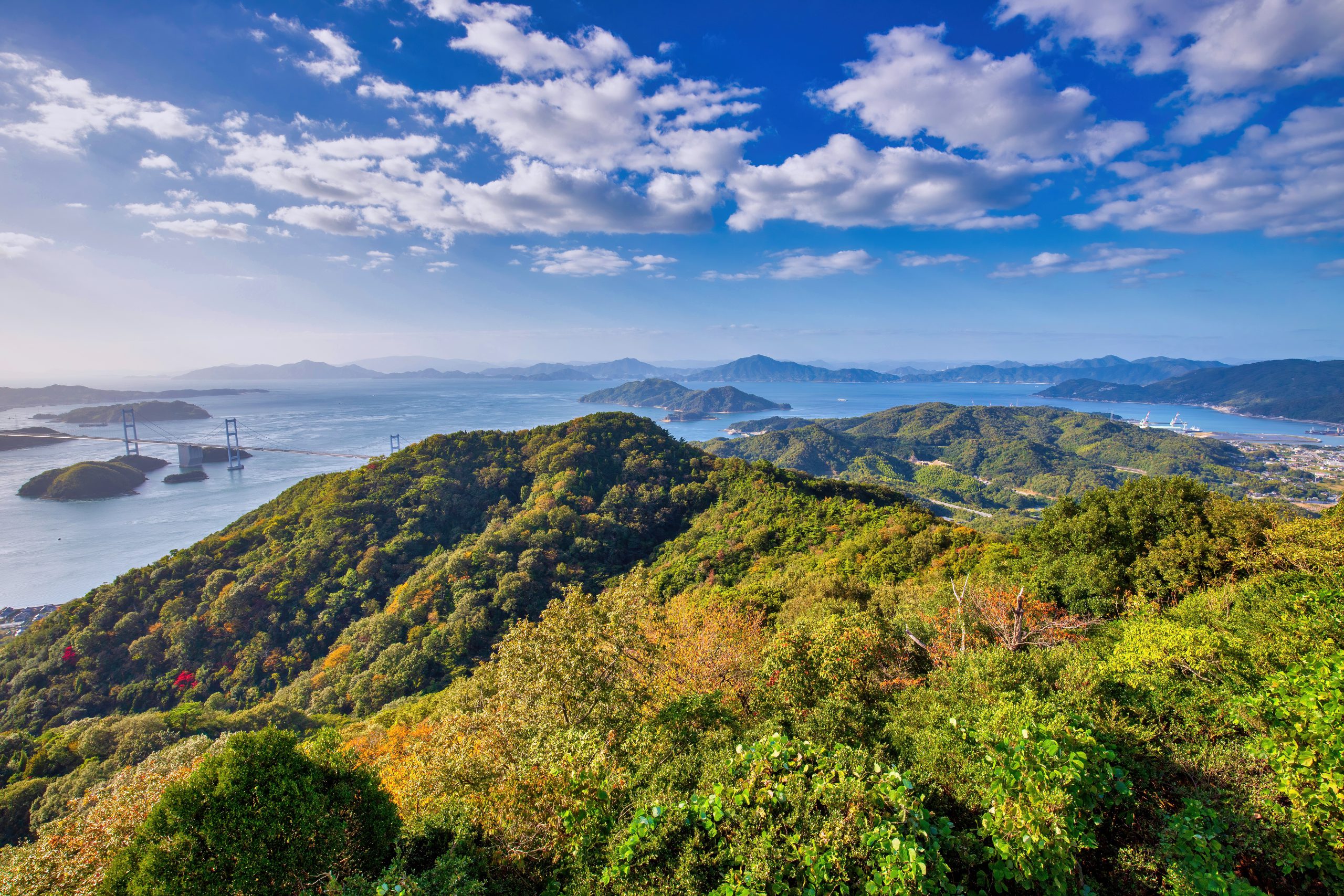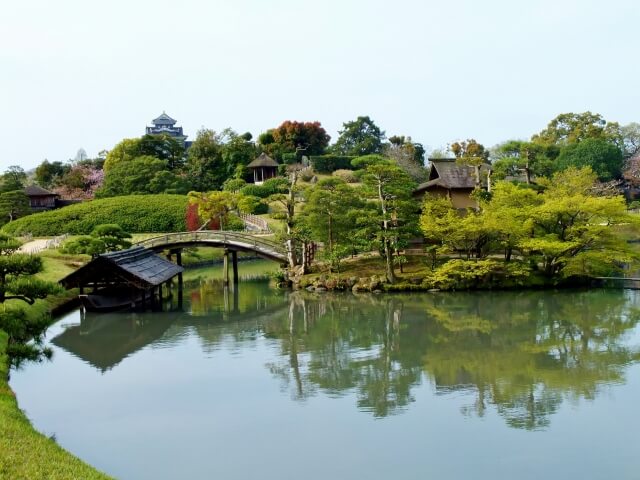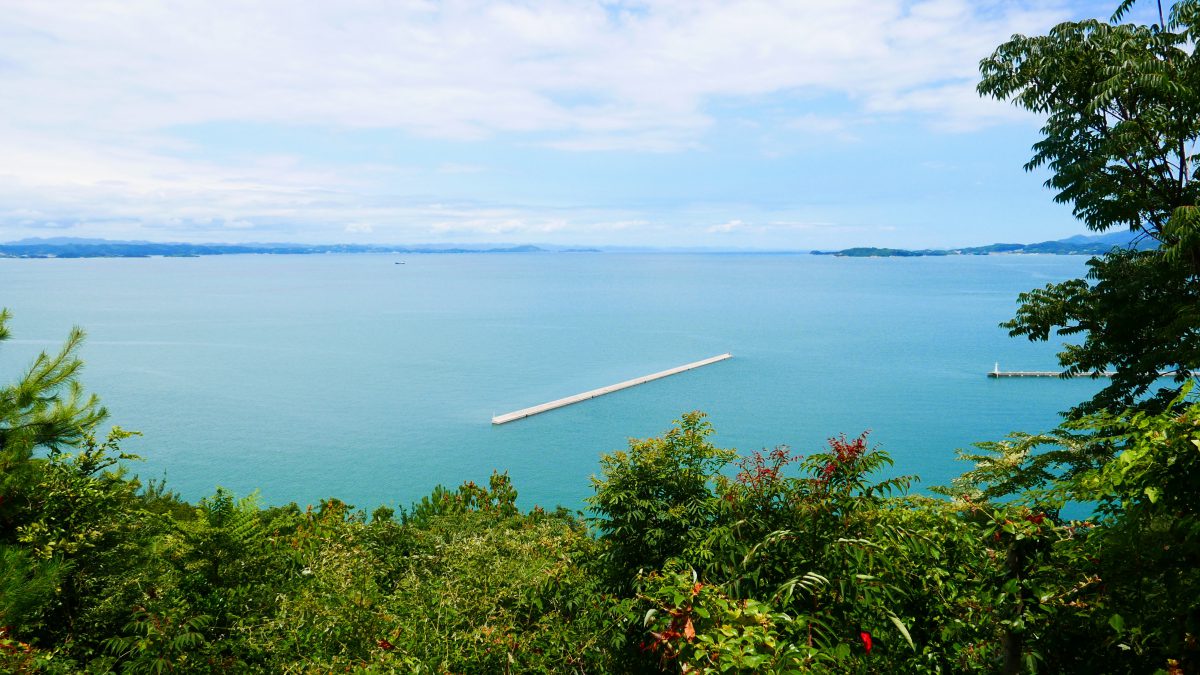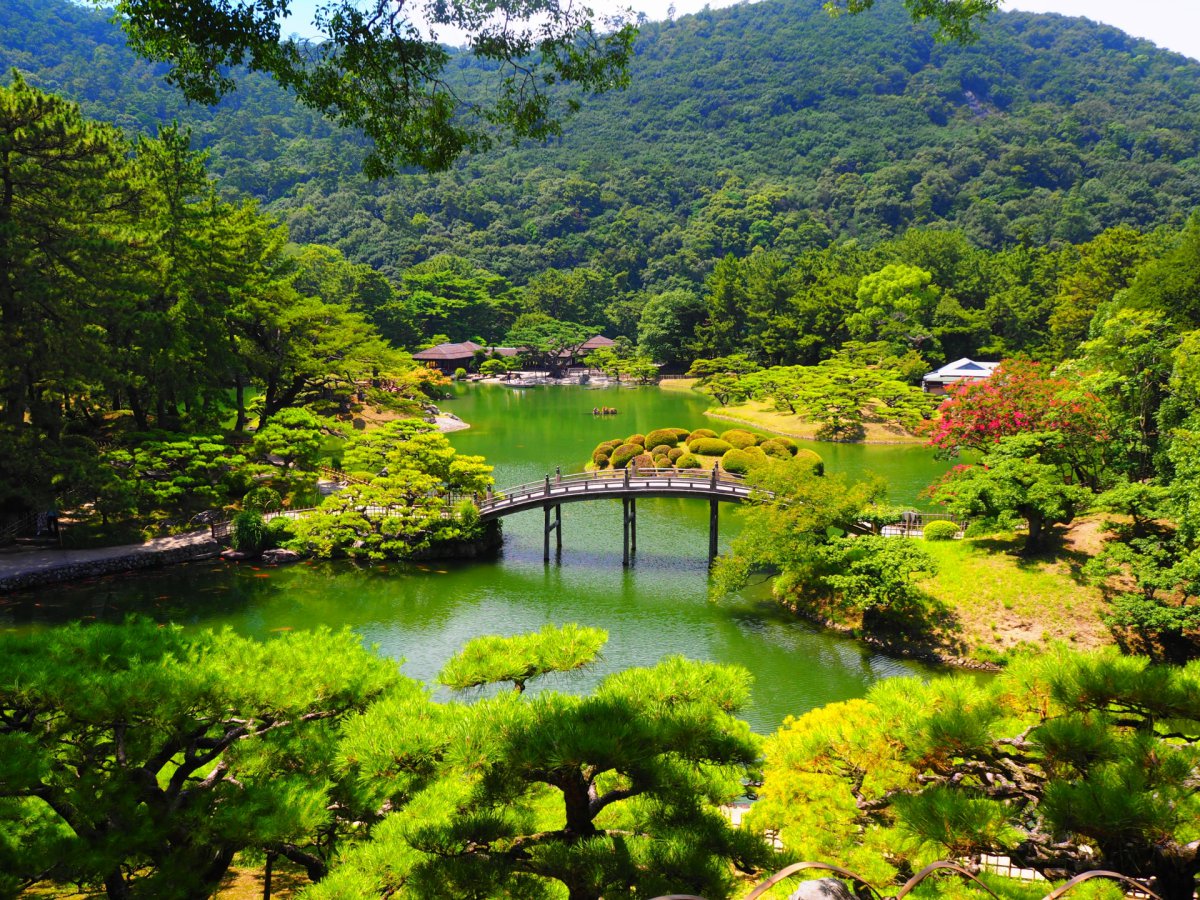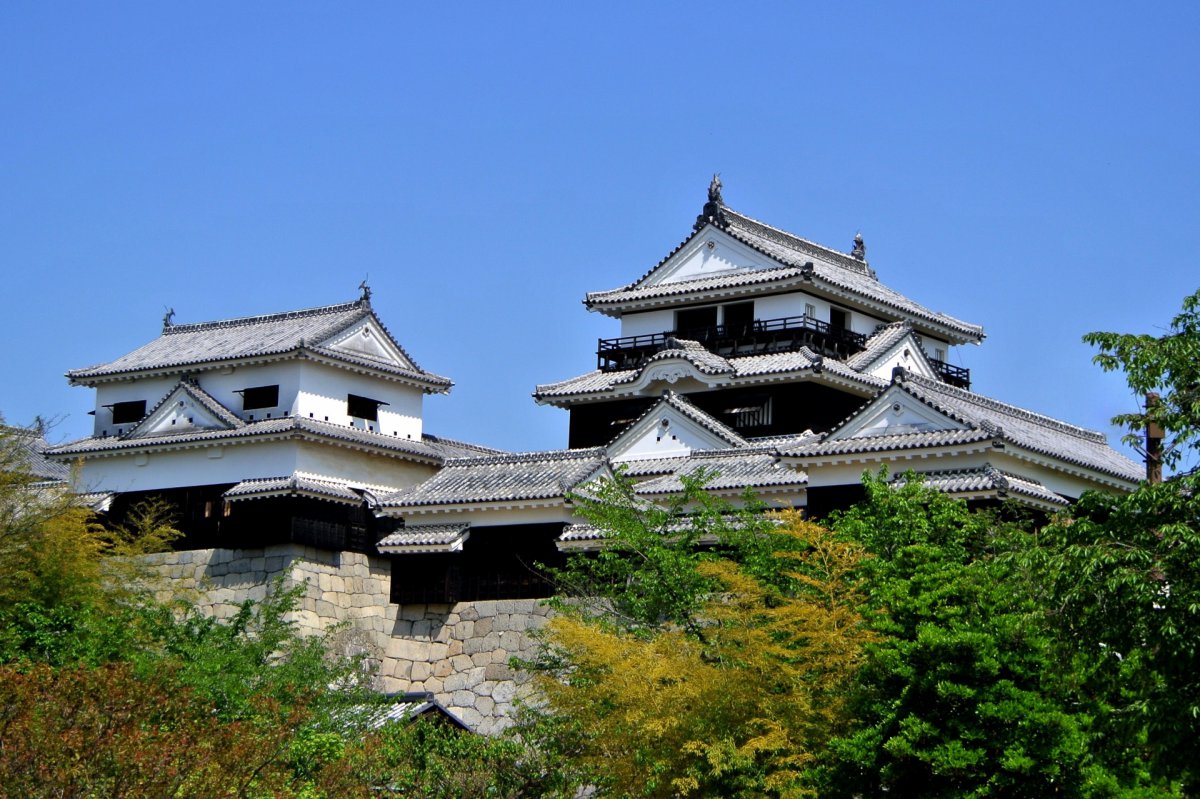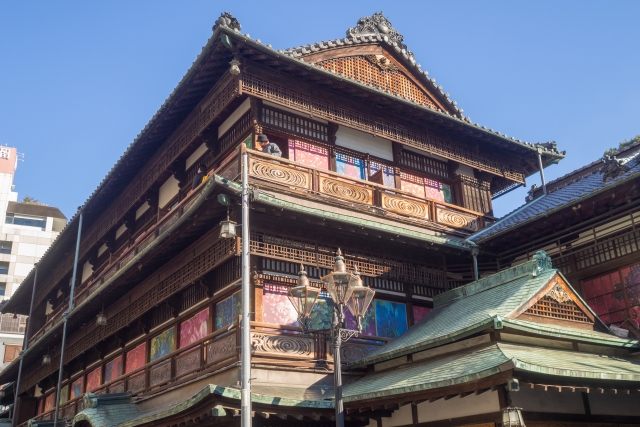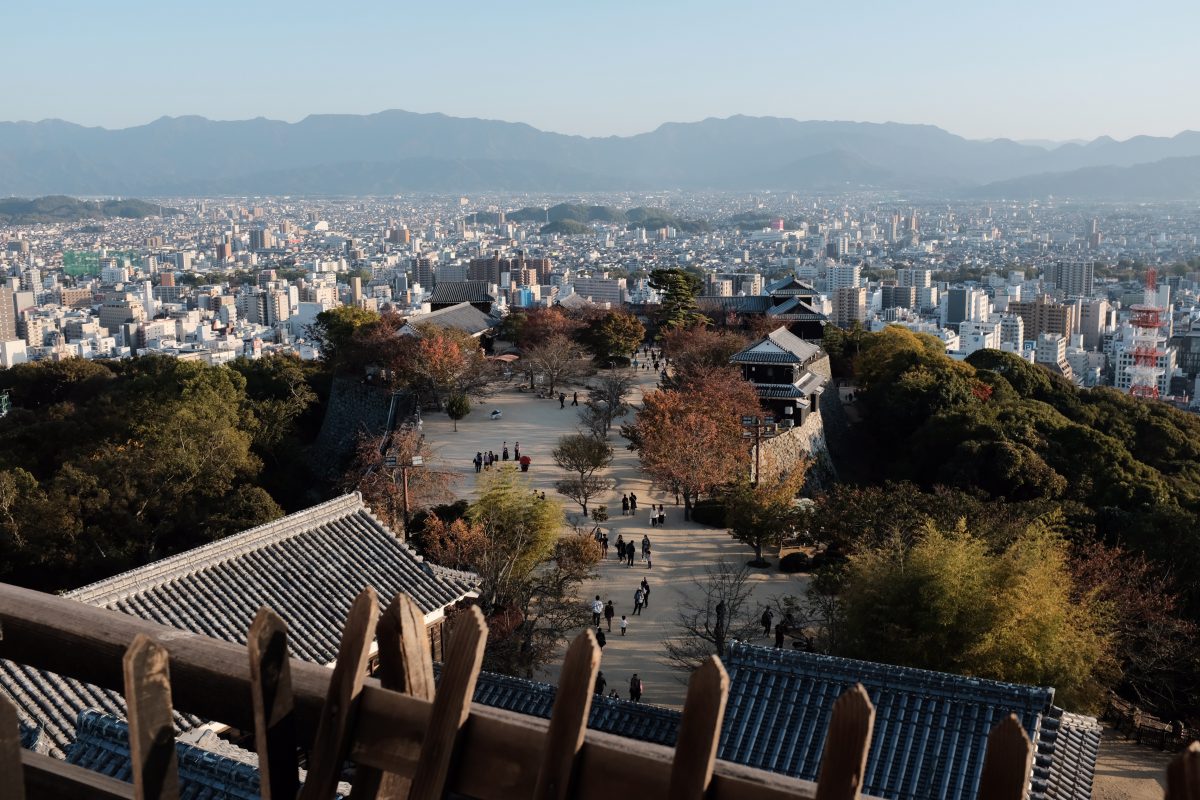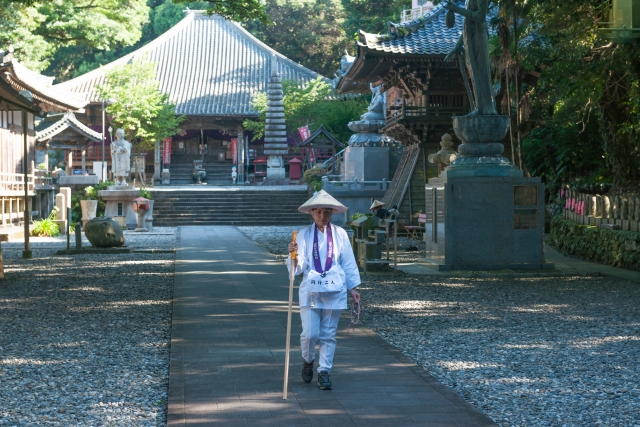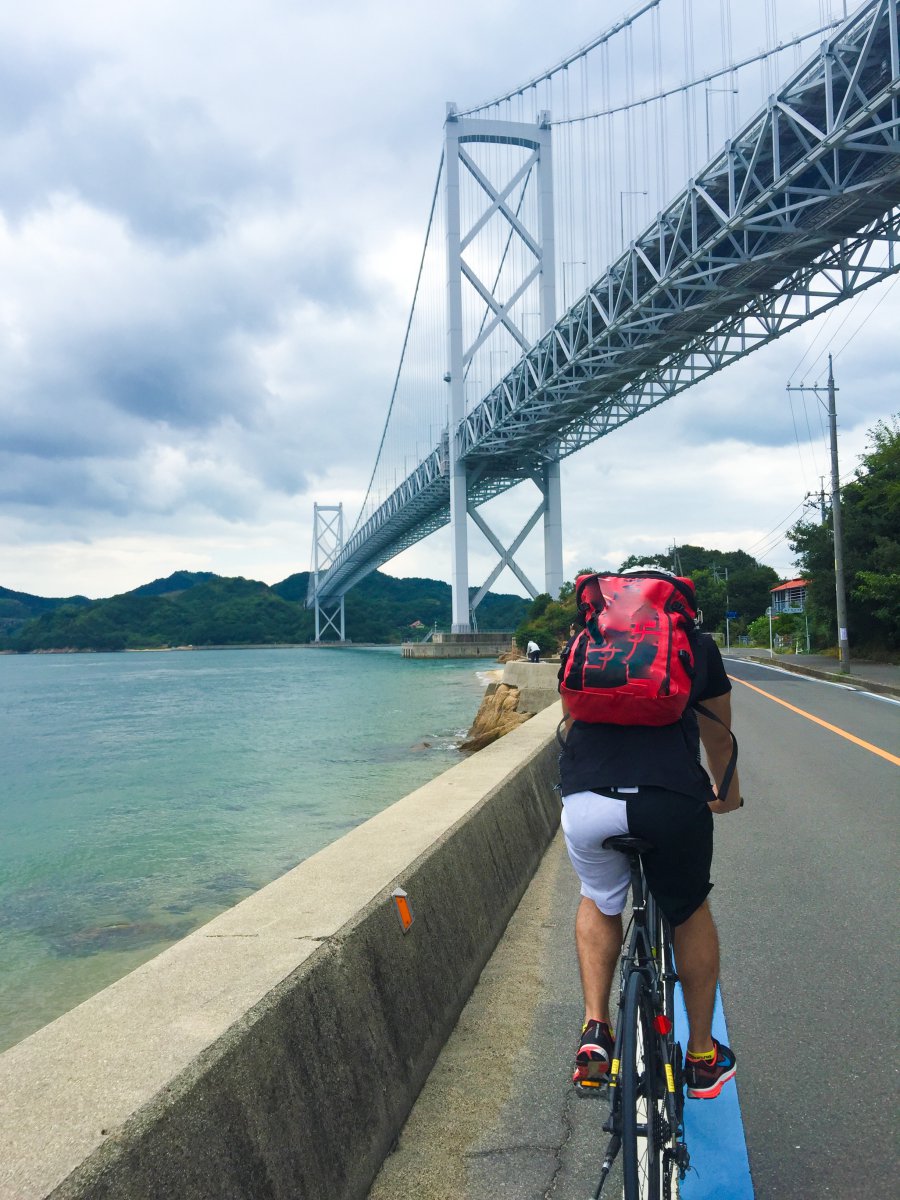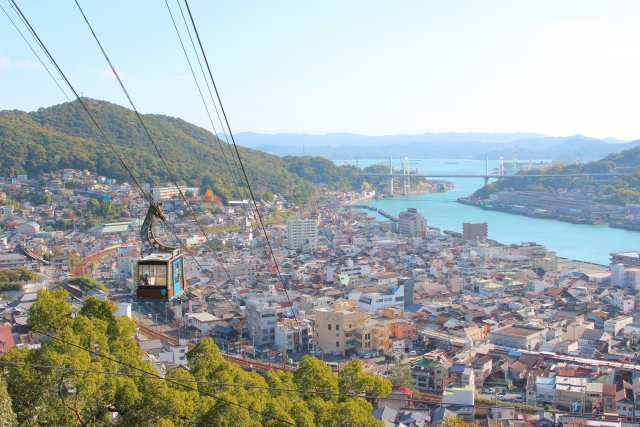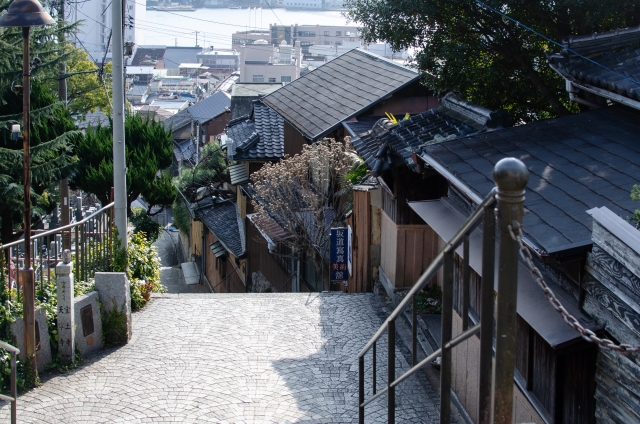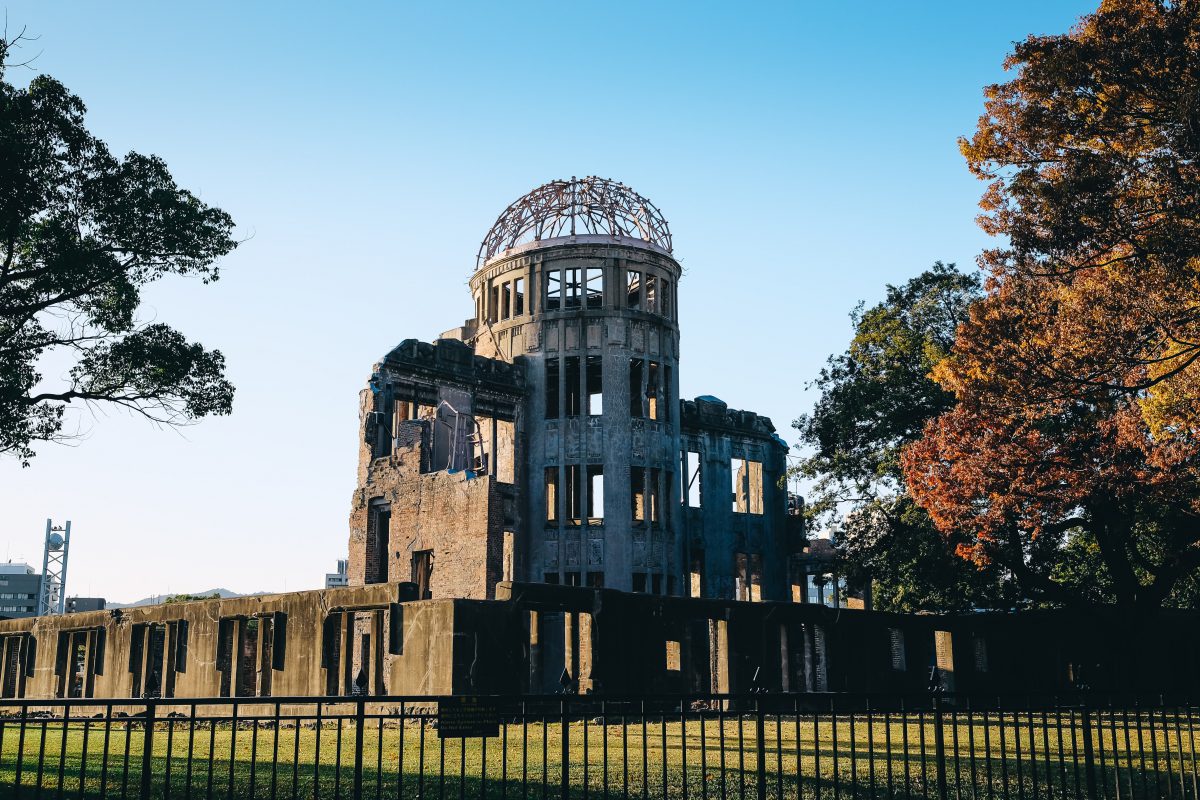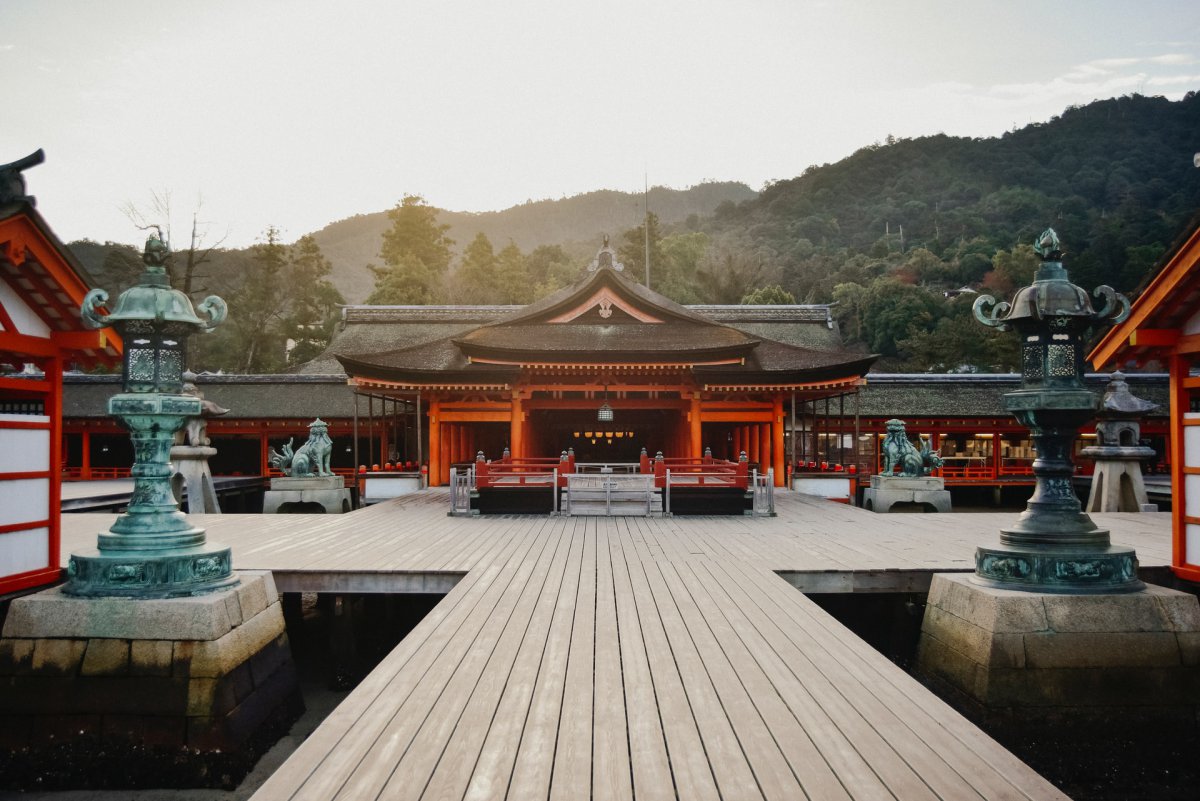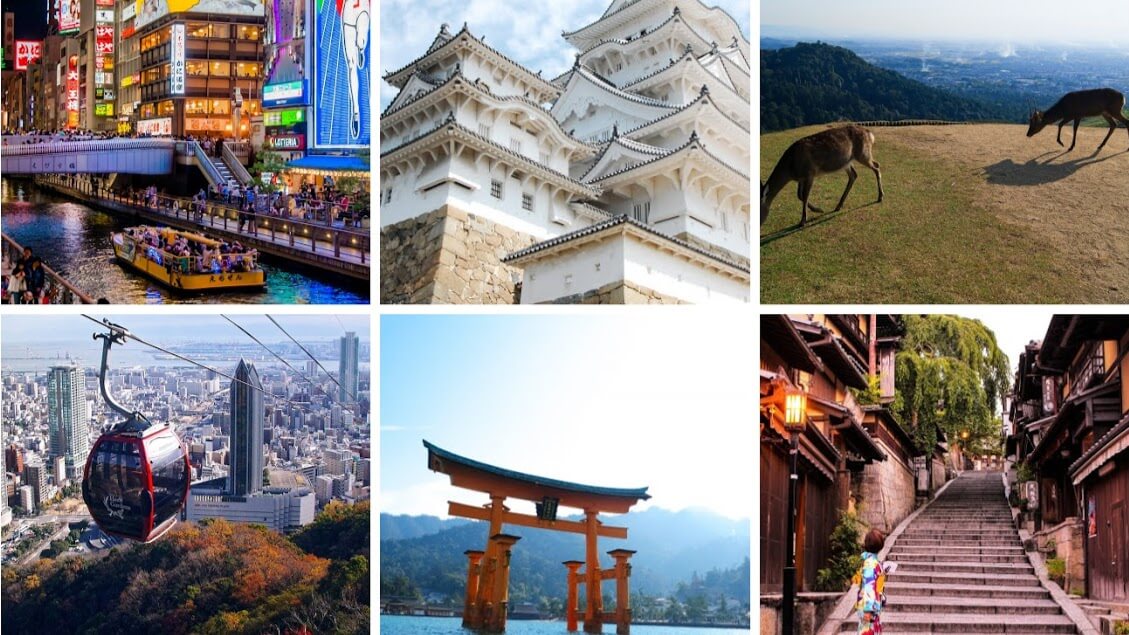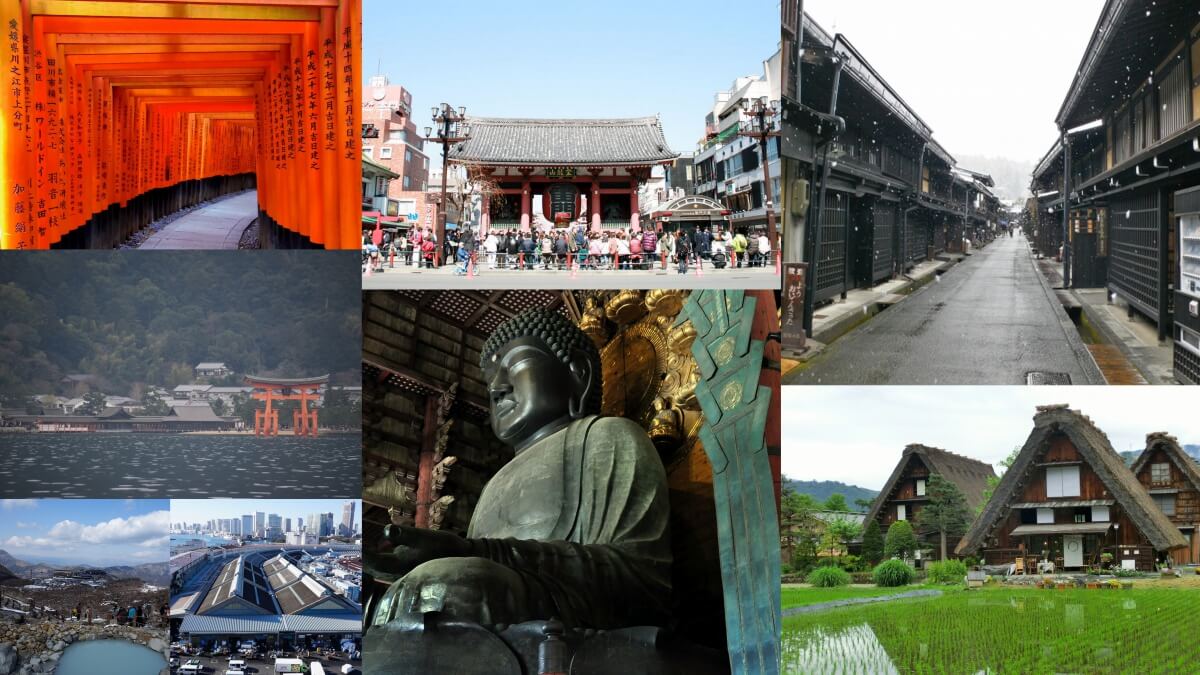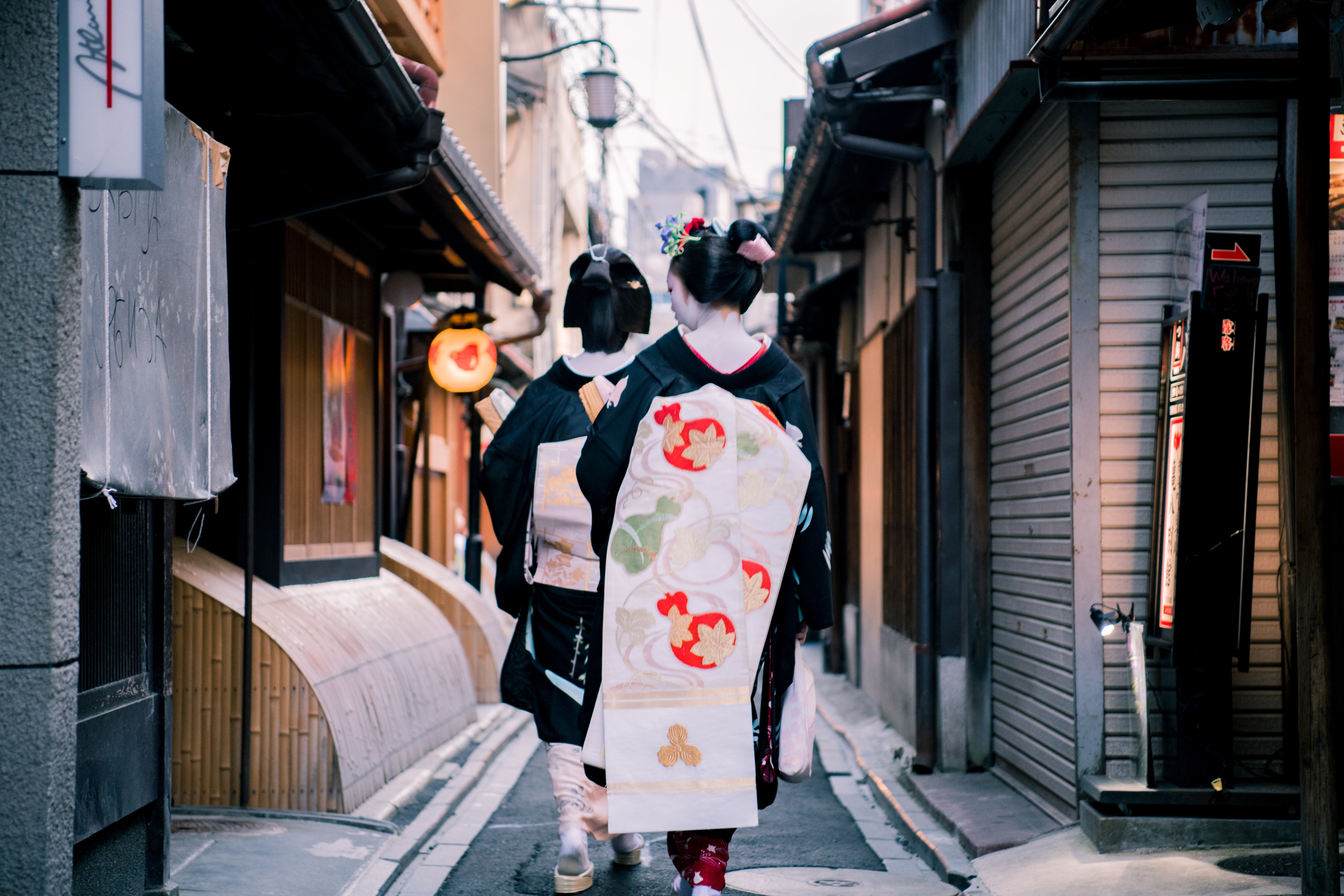The island of Shikoku is the smallest and least-populated of Japan’s four main islands (Honshu, Kyushu and Hokkaido) and also its least visited. Shikoku however, is well worth a visit, even if you can only manage to spend a week in the area. Ideally, you’d spend at least a few days in each of the island’s four prefectures (Tokushima, Kochi, Ehime and Kagawa) but that really depends on when you visit and what you want to do. Here we’ll provide you with an example for your one week Shikoku itinerary.
Day 1: Osaka – Himeji Castle – Okayama
Day 2: Okayama – Naoshima
Day 3: Naoshima – Teshima Island – Takamatsu
Day 4: Takamatsu – Matsuyama
Day 5: Matsuyama
Day 6: Shimanami Kaido Trail
Day 7: Onomichi – Hiroshima
This proposed itinerary starts in Osaka and will end in Hiroshima, but you can start from either city. It is also possible to start in Hiroshima and make your way up to Osaka. All activities, including the Shimanami Kaido cycling tour, can be done the other way around too. Let’s have a more detailed look at the itinerary.
Day 1: Osaka, Himeji Castle & Okayama
After you have enjoyed all the good things Osaka has to offer, hop on the Shinkansen for Okayama, which leaves every 15 minutes. A one-way direct ride should only take you 45 minutes, but we suggest making a short stop in Himeji, to visit the beautiful Himeji Castle (姫路城), one of the 12 original castles of Japan and also considered to be one of the most beautiful castles in all of Japan. From Himeji Station to the castle is a 20 minute walk.
After taking in the impressive beauty of Himeji Castle, continue to Okayama (岡山) an important transportation hub in the area. The castle town’s most popular attraction is the Japanese-style Korakuen Garden (後楽園) , located near Okayama Castle (岡山城), home to several traditional architectural highlights. Among the Japanese, Okayama is famous for Momotaro (桃太郎), also known as peach boy, who, according to the local legend, defeated the ogres of Megijima who were merauding the area. Spend the night in Okayama and don’t miss out on the local delicacies. Depending on your appetite to discover more of the area, you can take a cycling trip to Kibi Plain, the canal-district of nearby Kurashiki or discover more of Okayama. Stay at one of the many hotels near the station, for example Mitsui Garden Hotel Okayama
Day 2: Okayama – Naoshima
Okayama offers easy access to the famous art island of Naoshima (直島). The island is an art sanctuary home to several modern art museums such as Chichu Art Museum or Benesse House Museum, architectural highlights and other amazing art works. From Okayama Station take an express bus or train to Uno Port, from where you can board the boat to Naoshima.

When you arrive at Naoshima, the first iconic piece of art, the dotted Red Pumpkin designed by the famous Japanese artist Yayoi Kusama, will welcome you at Miyanoura Port. The best way to explore the island is renting an electric bicycle. If you are in the mood for a workout you can also rent a normal bicycle, but there are quite a few hills on the island. Explore all of Naoshima’s highlights and stay overnight at MY LODGE Naoshima.
Day 3: Naoshima – Teshima Island – Takamatsu
Take an early ferry from Naoshima via Teshima Island (豊島) to Takamatsu. Teshima Island is a charming spot of natural beauty and one of the locations of the Setouchi Triennale international art festival. Takamatsu (高松), located in Japan’s smallest prefecture Kagawa, used to be the main point of access to Shikoku but is relatively undiscovered. Ritsurin Garden (栗林公園) is one of the most pristine patches of landscape you will ever come across, enjoy a refreshing cup of Japanese green tea at Kikugetsu-tei teahouse while taking in the beautiful garden. After a full day of exploration, enjoy the local specialty, sanuki udon, and overnight at JR Hotel Clement Takamatsu.
You can also opt for spending the night at Konpira Onsen (こんぴら温泉), unwind at the hot springs and next morning, climb the 1,368 steps to the top of Kotohira-gu shrine.
If you have an extra day to spare, we recommend a short trip to Megijima and or Ogijima. Two small islands just off the coast of Takamatsu with amazing scenic views, short hikes and great for exploring in a day.

Day 4: Takamatsu – Matsuyama
From Takamatsu to Matsuyama, take the JR limited express train that runs along the northern coastline and bring you to Matsuyama in approximately 3 hrs. The train ride offers expansive scenic views over the island-dotted Seto Inland Sea, a brilliant way to enjoy more of the natural beauty of Shikoku.
Matsuyama (松山) is the prefectural capital of Ehime Prefecture and the largest city in Shikoku. The city is best known for Dogo Onsen (道後温泉), one of Japan’s oldest onsen resorts – dating from 189 – located on the outskirts of the city. The main attraction is the wooden public bathhouse Dogo Onsen Honkan that served as an inspiration for the Ghibli movie Spirited Away. Another highlight is Matsuyama Castle (松山城), also on the list of Japan’s 12 original castles and a prime sakura viewing spot.
Spend the night at Yamatoya Honten, a Japanese ryokan with fabulous onsen facilities in Dogo Onsen.
Ehime Prefecture is referred to as the Land of the Mikans (oranges), blessed with warm and sunny weather all throughout the year, the area is a paradise for citrus fruits lovers. So make sure you try some of the juicy, sweet mikan. Besides mikan, Ehime is known for its castles, onsen resort, the world’s longest suspension bridge, historical shrines and temples.
Day 5: Matsuyama
Spend a day exploring the highlights of Matsuyama or undertake a day trip from the city into the more rural areas near the city, such as Mount Ishizuchi, or visit Ehime’s ‘Little Kyoto’ Ozu. You can also opt to visit some temples from the famous Shikoku 88 Temples Pilgrimage also known as ohenro near Matsuyama such as Ishite Temple or Hanta Temple, or even walk part of the 1,200-year-old circular trail.
Day 6: Cycle the Shimanami Kaido
Start the day early and make your way to Imabari (今治市), the start of the Shimanami Kaido Cycling Road, a scenic drive with the most amazing views of the Seto Inland Sea. Shimanami Kaido (しまなみ海道) is a 70 kilometer long toll road, crossing six small islands and connecting Imabari in Shikoku with Onomichi on the mainland. The cycling trail is about 80 km long with several attractions on the way including some interesting museums. Rent bicycles and cycle across the comfortable road before returning the bicycles in Onomichi. It is highly recommended to make your reservation online in advance to secure a nicer bike that fits you best.
It is hard to ride with a heavy backpack or suitcase, fortunately there is a same-day luggage transfer service available, offered by Sagawa’s “Shimanami Kaido Cycling Without Baggage” service. You can also send your luggage via the normal transport services, however they often do not offer same day delivery.
The ending point of the Shimanami Kaido is Onomichi (尾道) in Hiroshima Prefecture, a favourite tourist spot for Japanese, but not much visited by international tourists. The lovely little port town is characterized by its dramatic slopes and narrow streets and known for its temples and many cats. Take a cable car up the slopes or walk the popular Temple Walk that passes 25 historic temples to the top of Senkoji mountain. Senkoji Park at the top affords some great views over the traditional town and the Seto Inland Sea, the view is especially attractive in the sakura season and considered one of Japan’s best cherry blossom spots.
Day 7: Onomichi – Hiroshima
After waking up in Onomichi, explore the quaint little port town with a nostalgic atmosphere before heading on to Hiroshima (広島市), the city of peace and the sight of the infamous atomic bomb dropping during the Second World War. Next to its history, Hiroshima is famous for its scenic beauty and two UNESCO World Heritage Sites; the Atomic Bomb Dome and Itsukushima Shrine in Miyajima, a small island just off the coast of Hiroshima. As always, a private tour of Hiroshima and Miyajima can take you to the meaningful sites so you can learn the history and importance of the historical events as well as enjoy the local attraction best.
There are many more must-see tourist spots for you to explore and experiences for you to have. Go hiking up in to mountains, visit the Awa Odori Museum in Tokushima, see the magnificent whirlpools in the Naruto Straits or go kayaking in the Shimanto River. Don’t forget to try some of the local specialties like Tokushima Ramen, Katsuo Tataki and the juicy oranges of Ehime. Shikoku has much more to offer and because it isn’t largely discovered by (international) tourist, you can have a relaxing, authentic and true Japanese experience. You will experience the utmost kindness from local people who are happy to welcome you in beautiful Shikoku.
This seven days itinerary takes you around some of the highlights surrounding the Seto Inland Sea and Shikoku Region. As mentioned, this itinerary merely serves as an example for your trip, you can add as many other stops along the route as you want and it can also be done the other way around starting in Hiroshima and ending your trip in Osaka. For the best, personalized advice ask us for travel tips in Japan or make sure to get most out of your visit and book a private tour.
Follow us on Instagram, Facebook and Twitter for more travel inspiration. Or tag us to get featured!
Happy travelling!
Other articles you may like
This post may contain some affiliate links. When you click through and make a purchase we may receive some commission, at no extra costs to you
